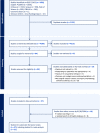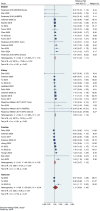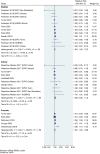Ambient air pollution and urological cancer risk: A systematic review and meta-analysis of epidemiological evidence
- PMID: 38879581
- PMCID: PMC11180144
- DOI: 10.1038/s41467-024-48857-2
Ambient air pollution and urological cancer risk: A systematic review and meta-analysis of epidemiological evidence
Abstract
Exposure to ambient air pollution has significant adverse health effects; however, whether air pollution is associated with urological cancer is largely unknown. We conduct a systematic review and meta-analysis with epidemiological studies, showing that a 5 μg/m3 increase in PM2.5 exposure is associated with a 6%, 7%, and 9%, increased risk of overall urological, bladder, and kidney cancer, respectively; and a 10 μg/m3 increase in NO2 is linked to a 3%, 4%, and 4% higher risk of overall urological, bladder, and prostate cancer, respectively. Were these associations to reflect causal relationships, lowering PM2.5 levels to 5.8 μg/m3 could reduce the age-standardized rate of urological cancer by 1.5 ~ 27/100,000 across the 15 countries with the highest PM2.5 level from the top 30 countries with the highest urological cancer burden. Implementing global health policies that can improve air quality could potentially reduce the risk of urologic cancer and alleviate its burden.
© 2024. The Author(s).
Conflict of interest statement
The authors declare no competing interests.
Figures





References
-
- World Cancer Research Fund International. Cancer trends. [Available from: https://www.wcrf.org/cancer-trends] (2023).

